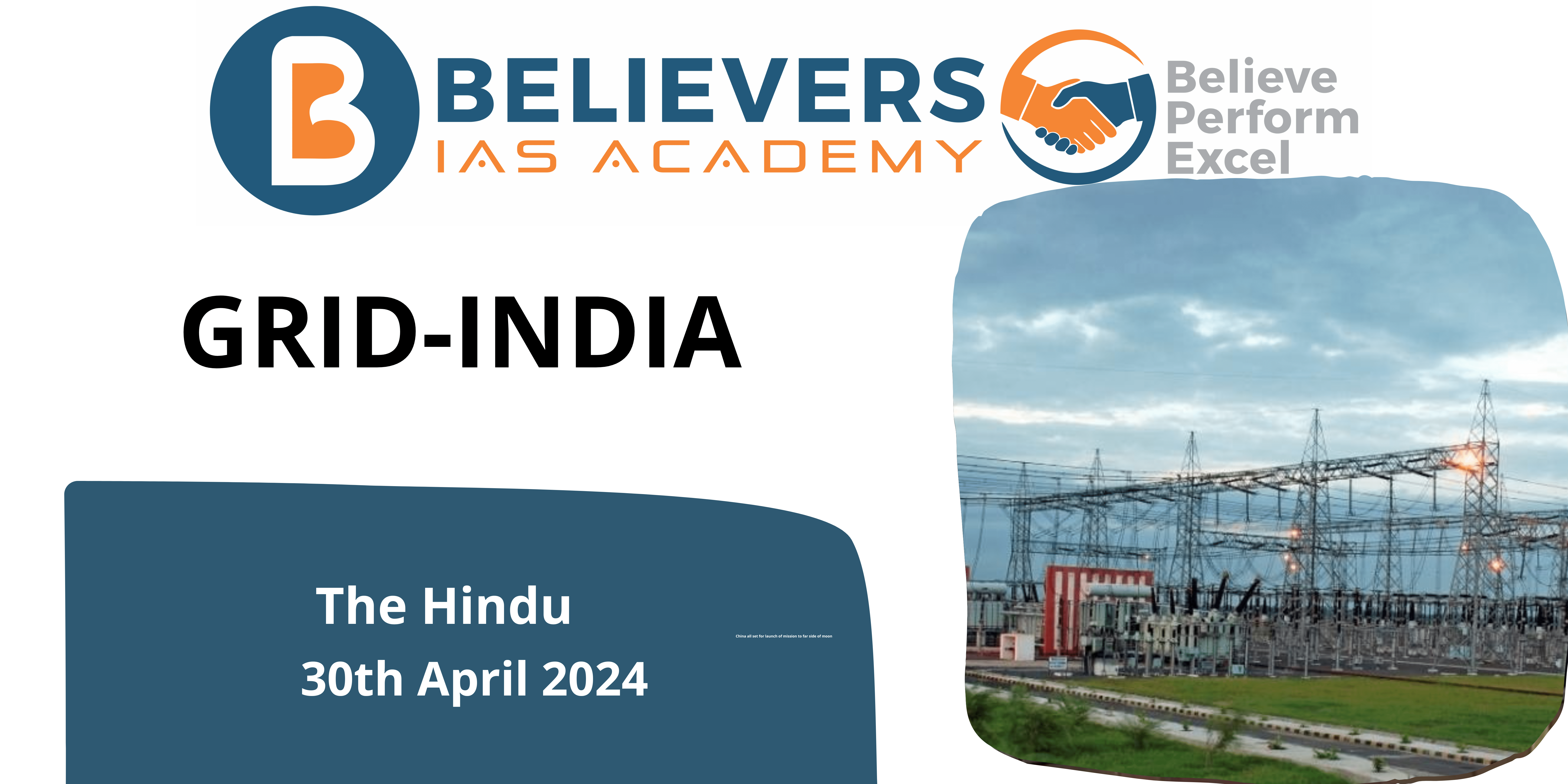GRID-INDIA
Context:
Recently, GRID-INDIA has been designated as Mini-Ratna Category-I Central Public Sector Enterprise (CPSE) by the Ministry of Power.
Relevance:
GS-3 (Economy)
Key highlights:
- Grid Controller of India Limited (GRID-INDIA) was conferred the status of Miniratna Category-I Central Public Sector Enterprise (CPSE) by the Ministry of Power.
- It was established in 2009.
- It oversees the seamless and uninterrupted operation of the Indian Power System, ensuring the efficient transfer of electric power within and across regions, and facilitating transnational power exchanges with a focus on reliability, economy, and sustainability.
- It facilitates competitive and efficient wholesale electricity markets and administers settlement systems.
Central Public Sector Enterprises (CPSEs):
- CPSEs are those companies in which the direct holding of the Central Government or other CPSEs is 51% or more.
- The Government of India categorizes Central Public Sector Enterprises (CPSEs) into three categories: Maharatna, Navratna, and Miniratna, based on a wide range of factors that includes financial performance and progress.
- Maharatna:
- Companies with more than Rs. 5,000 crores of net profit for three consecutive years.
- Average annual turnover of Rs. 25,000 crore for three years or should have an average annual net worth of Rs. 15,000 crore for three years.
- Should also have global operations or footprints.
- A CPSE should also have a Navratna status and has to be listed on an Indian stock exchange.
- Navratna Scheme:
- Introduced in 1997 to identify Central Public Sector Enterprises (CPSEs) with comparative advantages.
- Aims to support these CPSEs in becoming global players.
- Eligibility Criteria:
- Must have Miniratna status.
- Strong global presence.
- Examples of Navratna Companies:
- Bharat Electronics Limited
- Hindustan Aeronautics Limited
- Miniratna Scheme:
- Also introduced in 1997.
- Aims to minimize government interference and grant more autonomy.
- More importantly, Miniratnas should not have defaulted in any loan repayments or interest payments.
- It shall also not depend on any government guarantees or budgetary support.
- Miniratna Category-I:
- Profitable for three consecutive years.
- Pre-tax Profit of Rs. 30 crores or more in at least one year out of three.
- Examples: Airports Authority of India
- Miniratna Category-II:
- Same criteria as Category-I but with a profit for three consecutive years.
- Have a positive networth
- Examples: Artificial Limbs Manufacturing Corporation of India



